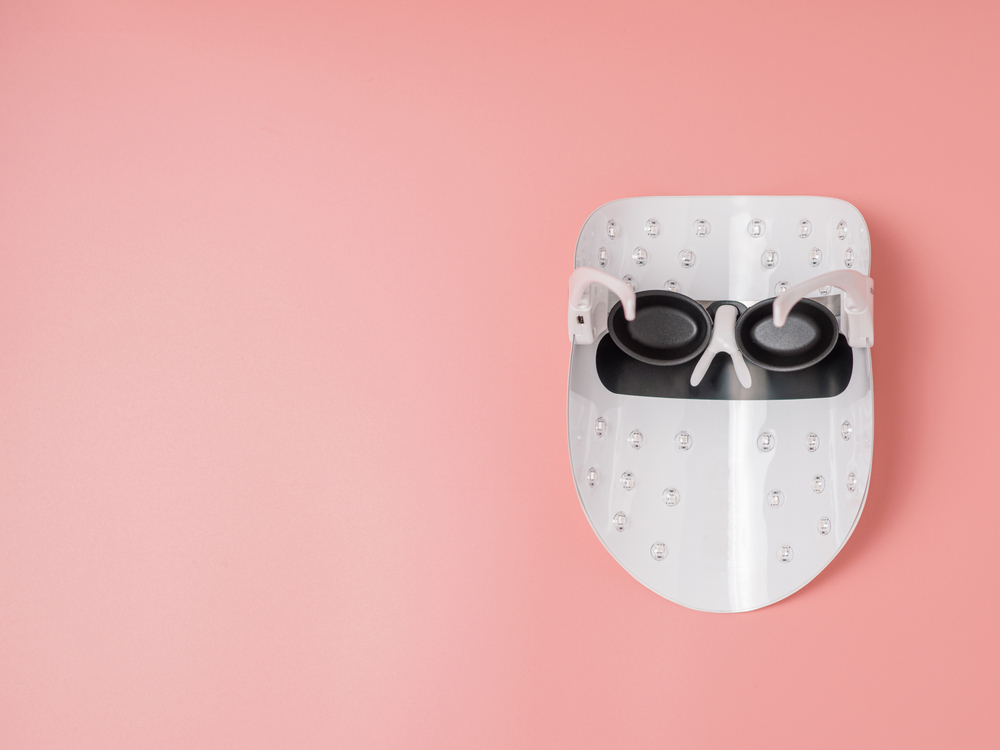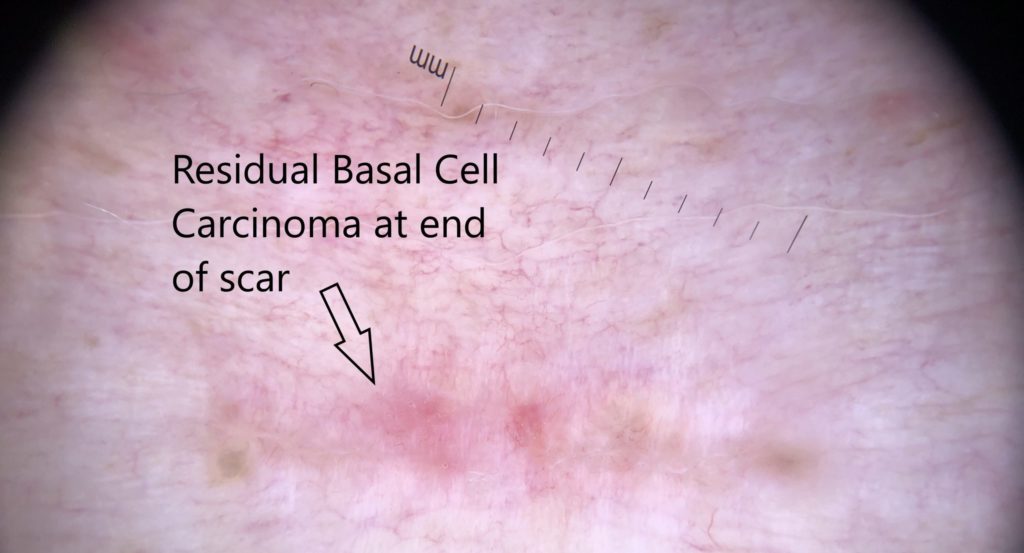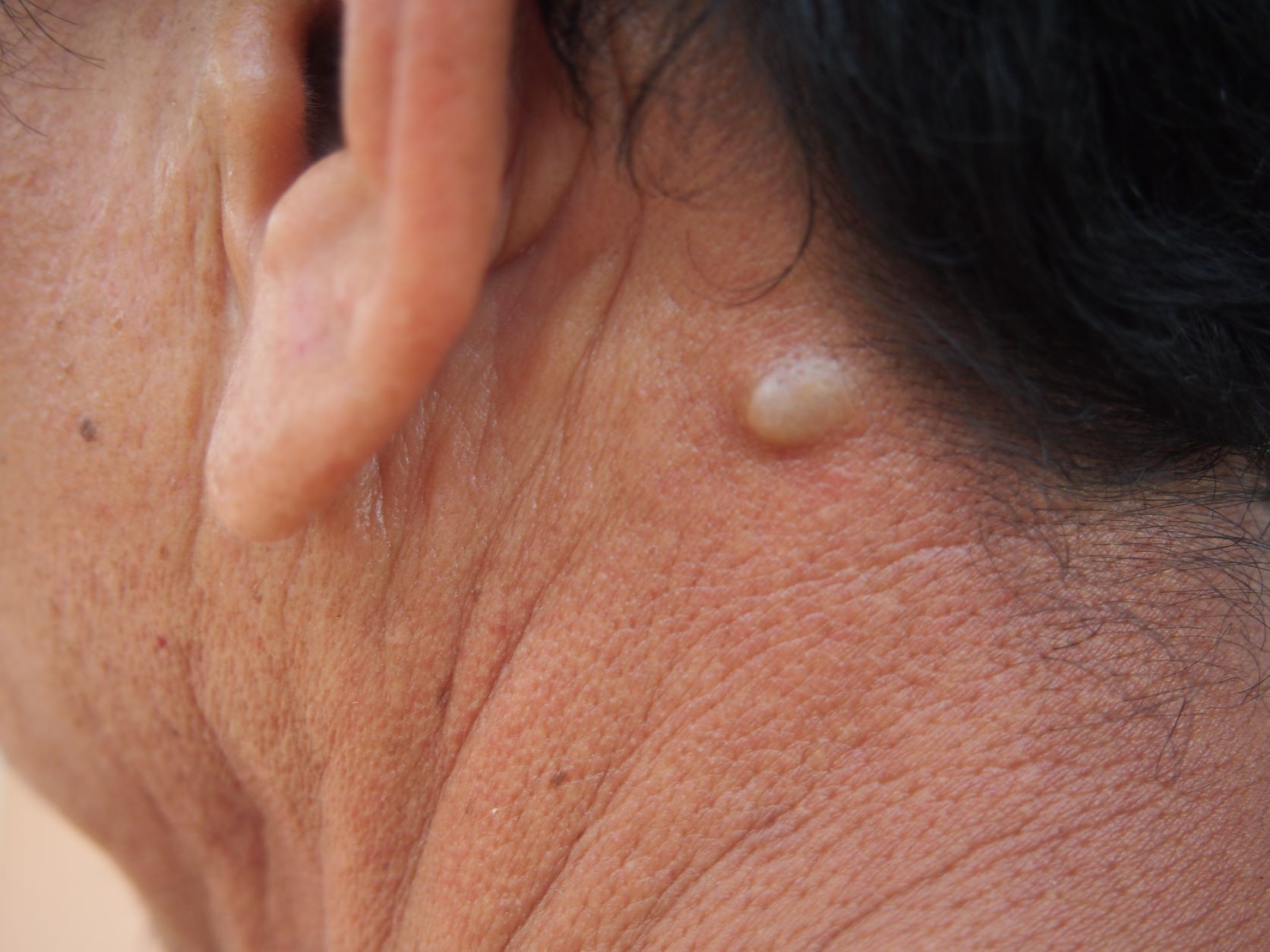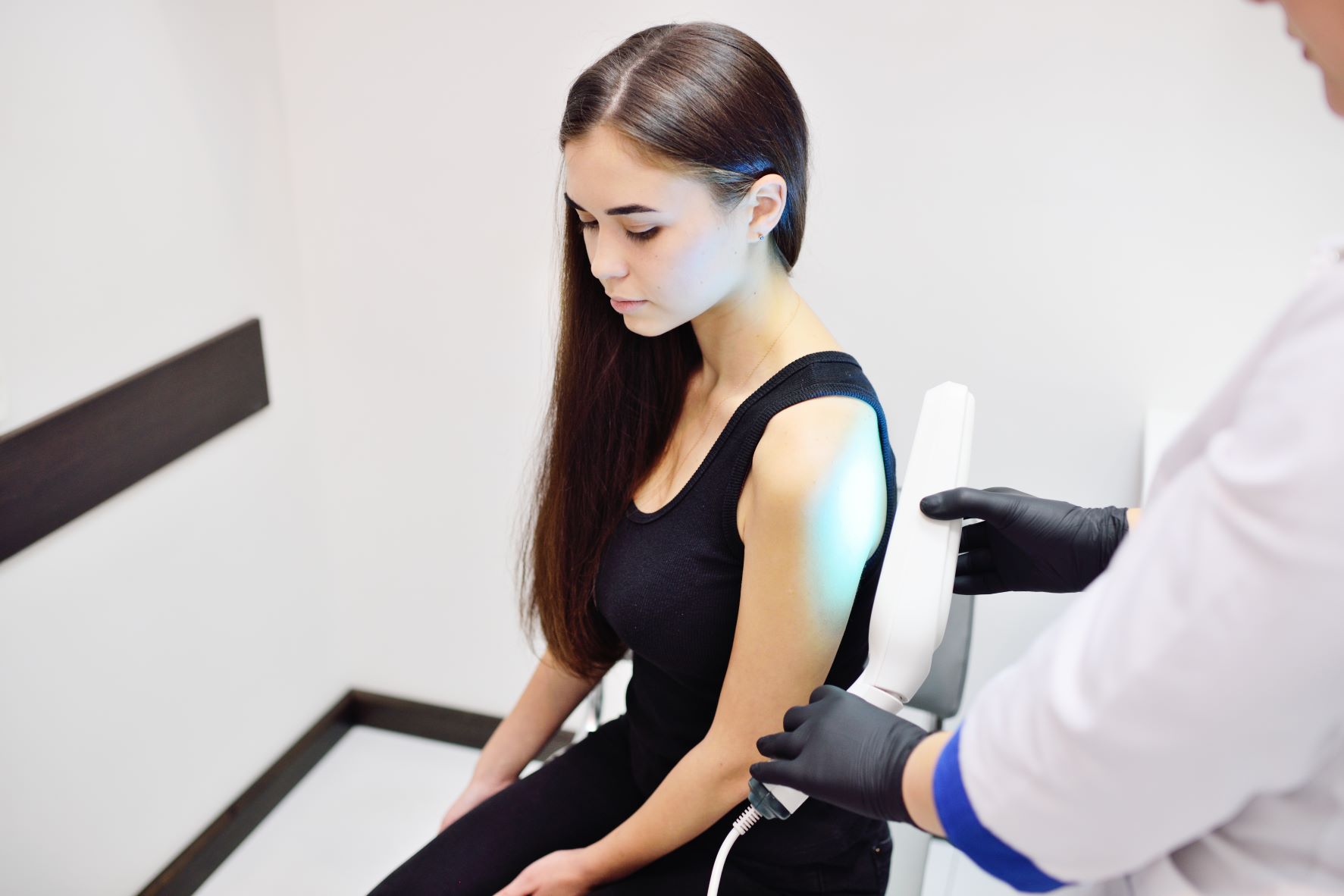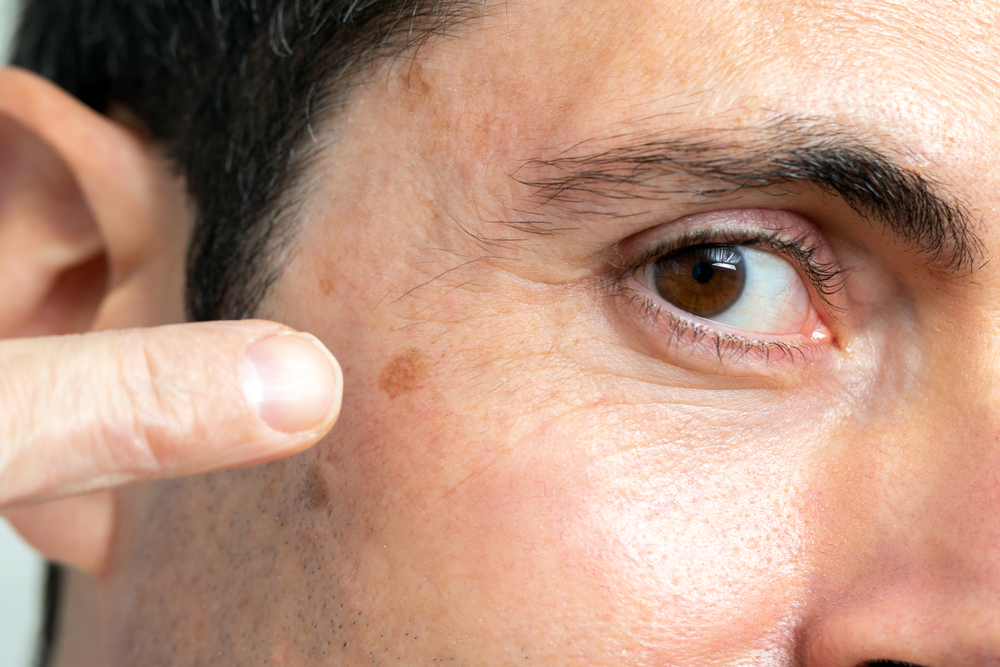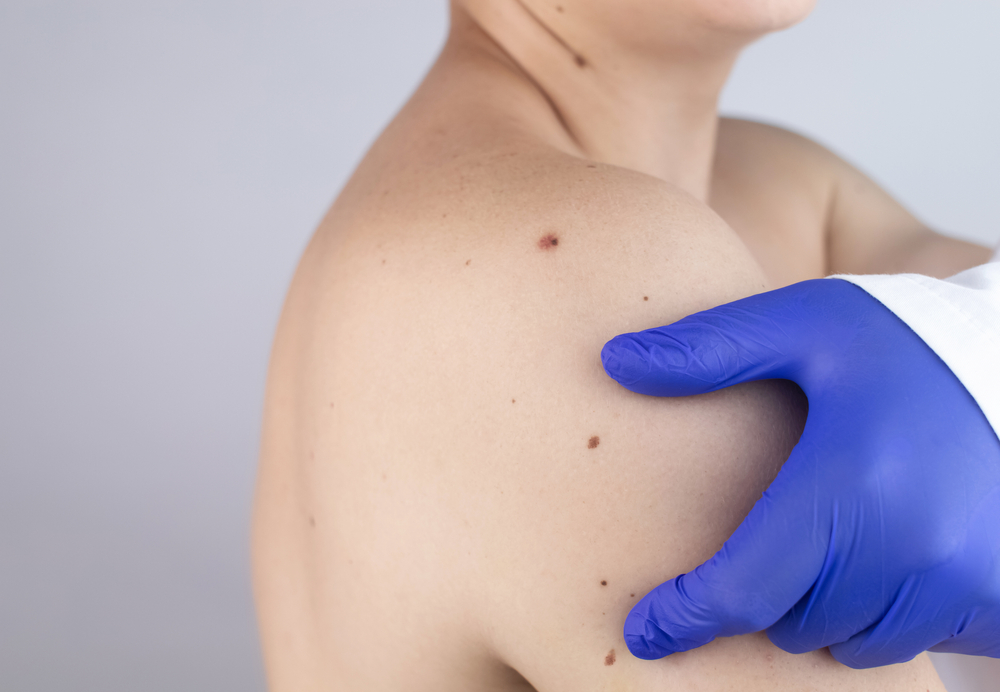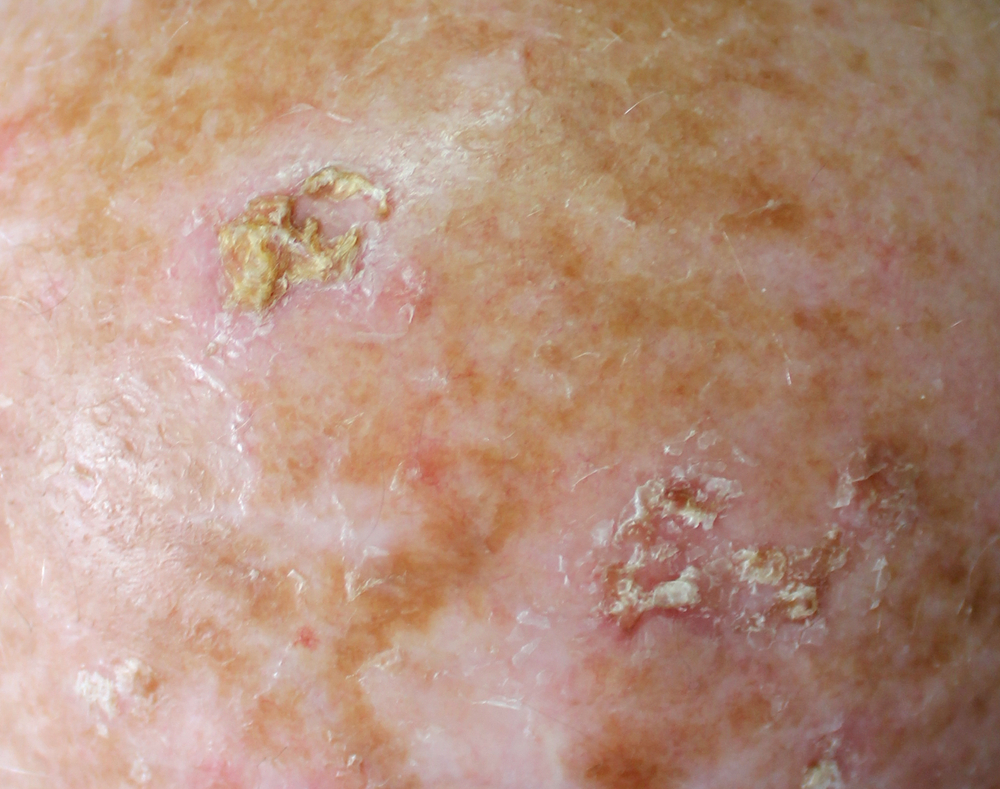If you’ve been searching for a better treatment for actinic keratosis, photodynamic therapy (PDT) may be the safe, effective, and highly versatile treatment solution you’ve been looking for. Through the power of light, photosensitizing medication, and the oxygen within your tissue, our dermatologists can target the problematic tissues deep within your skin.
Since our dermatologists customize the wavelength of light to target your specific skin condition, the precise reaction only attacks the unwanted cells, resulting in a safe and reliable treatment that never damages nearby healthy cells. Unlike superficial treatments that only address the surface-level symptoms, PDT stops precancerous cells from progressing, reduces production, and prevents the recurrence of new actinic keratosis. At the same time, PDT treatments can help to reduce dark spots caused by sun damage, alleviate the irritation caused by swollen or inflamed lesions, and produce a healthier and more normalized skin texture.
Our Dermatologists Prioritize Helpful Skincare Education
While undergoing a PDT treatment with our dermatologists, our experienced doctors will explain the entire process in detail and ensure that you have everything you need to maximize your beneficial results. To maintain the best outcomes and protect your skin following treatment, keep these simple care practices in mind after visiting our dermatologist in Southampton, PA.
Avoid Sun Exposure for 48 Hours After Treatment
Since the PDT treatment utilizes photosensitizing medication, any exposure to sunlight following treatment can cause the medication to continue reacting. We will provide you with an SPF sunblock to cover the treatment area, but it is recommended to cover the area and avoid any sun exposure. This even includes filtered sunlight from the windows in your home and car.
Use Gentle Cleansers & Healing Moisturizers
Your skin may be sensitive after the procedure. To wash the area, you can use a mild soap with gentle washing techniques. Try to avoid vigorous scrubbing or exfoliation, as the skin will be sensitive to the touch and needs time to recover after the process. After washing, you can apply bland moisturizers like Vaseline, Aquaphor, and other healing moisturizers that do not contain harsh fragrances or irritating chemicals. For an additional boost in soothing comfort, place the moisturizer in the refrigerator ahead of time for cooling relief.
Contact Our Dermatologists if You Have Any Problems
While Photodynamic Therapy is one of the most trusted and safe procedures available, it is possible to experience potential side effects. If you are experiencing excessive pain, a fever, or any other noticeable issues like bumps or blisters at the treatment site, please contact our dermatologists immediately. Any normal redness, swelling, or soreness should reside within 48 hours, leaving your skin “photo-rejuvenated”, healing from within, and ready to face the sunshine with a renewed tone and texture.
If you have any questions about the after-care process or would like to learn more about PDT, our licensed dermatologists are glad to help.


